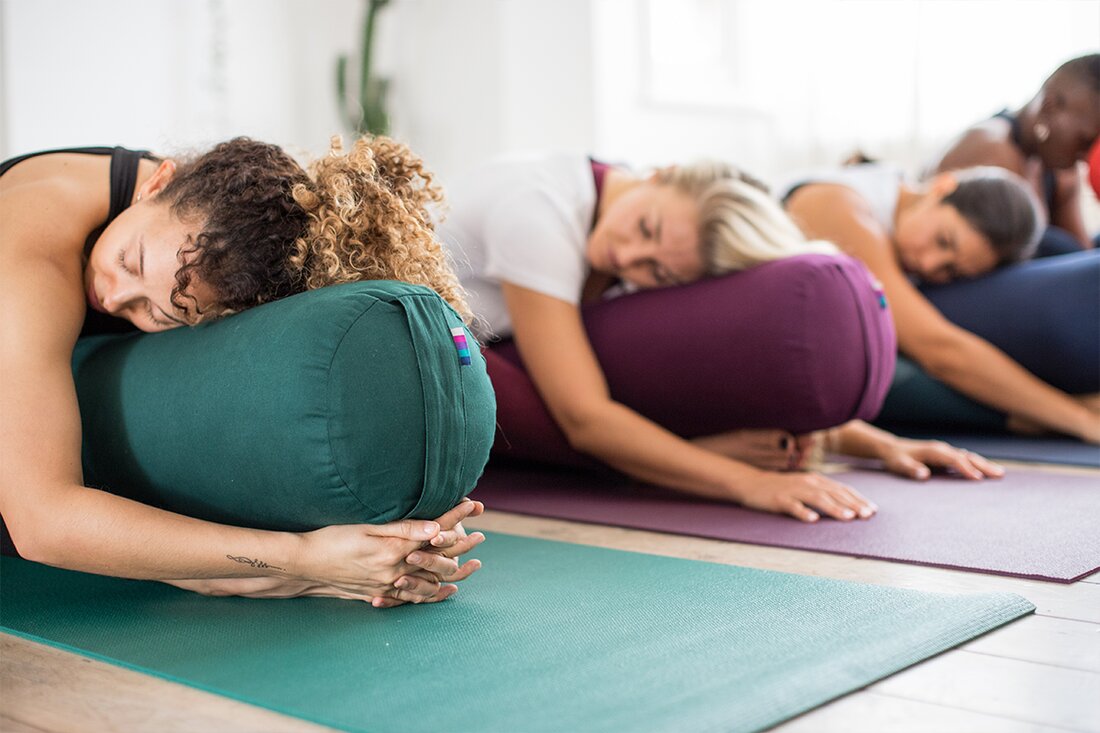5 yoga poses to relieve your adrenal glands
Whether it's stress from the unpredictable state of the world right now, stress from work, home life, or a general sense of underlying anxiety, the fact is that many of us experience more stress and discomfort than necessary, and it can linger in our bodies and minds long after the initial experience. When we don't allow ourselves to fully process stressful events, or when we constantly have anxious thoughts in our minds, we begin to put strain on the nervous system and adrenal glands, and if we continue to put ourselves in a state of stress, it can lead to...

5 yoga poses to relieve your adrenal glands
Whether it's stress from the unpredictable state of the world right now, stress from work, home life, or a general sense of underlying anxiety, the fact is that many of us experience more stress and discomfort than necessary, and it can linger in our bodies and minds long after the initial experience. When we don't allow ourselves to fully process stressful events, or when we constantly have anxious thoughts in our minds, we begin to put strain on the nervous system and adrenal glands, and if we continue to put ourselves in a state of stress, it can lead to burnout and even adrenal fatigue. If you tend to feel tired all the time or don't have the inspiration, energy, and mojo you once had, it could be a sign that your adrenal glands are overworked and need some TLC. Yoga, meditation, and pranayama (breathing techniques) can work wonders to correct adrenal problems and prevent stress from building up. However, there are some specific yoga methods that can help combat the adrenal glands, calm them and also rebalance the nervous system. Try the following exercises and incorporate one or two into your self-care routine to de-stress your adrenal glands.
Brahmari breath
The 'Humming Bee Breath' is a great way to activate the vagus nerve, putting the nervous system into parasympathetic (rest and digest) mode. When we breathe this way, the exhale is naturally longer, which is also an effective and surprisingly quick way to feel relaxed. To practice: Breathe in slowly and long through your nose. As you exhale, let out a long, quiet sound, as loud as necessary. Allow the sound to end naturally and repeat three to five times. To improve the exercise, cover your ears to feel and hear the vibration more.
Viparita Karani (legs up the wall)

This restorative inversion stimulates the baroreceptors (blood pressure sensors) in the neck and chest. When this happens, it triggers a reflex that reduces nerve input to the adrenal glands, slows the heart rate, lowers blood pressure, calms the nervous system, and relaxes blood vessels. To practice: Lie on the floor with a soft blanket underneath you and stretch your legs over the wall. You can improve this practice by placing an additional blanket or pad under your hips and a weighted sandbag on your feet (I.Lovethis variation!) or use a chair to support your lower legs instead of having them against the wall. Stay here for about 5 minutes.
Yoga Nidra
Yoga Nidra is a deeply relaxing and revitalizing practice that works into the unconscious layers of the mind. It is actually a phrase that describes the state of mind the practitioner enters during practice – which translates to “yogic sleep.” The “sleep” state you can experience when practicing yoga nidra is actually the “hypnogic” brain state, which is the state of mind we move into between wakefulness and sleep. This is a very suggestive and therapeutic place and through the use of a repeated sankalpa or determination, habits and thought patterns can be changed. During a workout, you are guided through a body scan, you visualize shapes, images or colors and you repeat a specific phrase such as “I am relaxed” or “I feel good”. To practice yoga nidra, take an online class or find a teacher whose voice calms you online.
Yin yoga butterfly pose

This pose stimulates the kidney meridian – which calms and strengthens the adrenal glands – and helps stretch the inner thighs and lower back. By stretching and moving along specific meridian lines, we draw on the ancient Eastern wisdom of Chinese medicine, which tells us that each organ corresponds to specific energy and emotional pathways in the body. When we allow ourselves to relax and surrender to the postures, we begin to not only work physically to relieve tension, but also to rebalance the nervous system. To practice: Bring the soles of your feet together to create a diamond shape on the floor with your legs. Fold forward as far as possible while feeling a stretch through your inner thighs and lower back. Use a bolster or pillow for support so you can fully let go for a few minutes.
Meditation of the inner smile
A traditional Taoist practice, the Inner Smile meditation helps bring warmth, compassion, and love to parts of the body that may need a little help at the moment. When we provide a sense of relaxation and positivity to organs that have been under stress, we are also sending them an energetic message that says “relax,” and when practiced regularly, they tend to understand the message. To practice the inner smile meditation: Get comfortable and close your eyes. As you inhale, imagine that you are breathing into your lower back (where your kidneys and adrenal glands are) and feel this space expanding, expanding, and lengthening. As you exhale, begin to smile and visualize the feeling and warmth of your smile spreading through the adrenal glands as well. Continue for 12 rounds.
Written by Yogamatters

 Suche
Suche
 Mein Konto
Mein Konto
